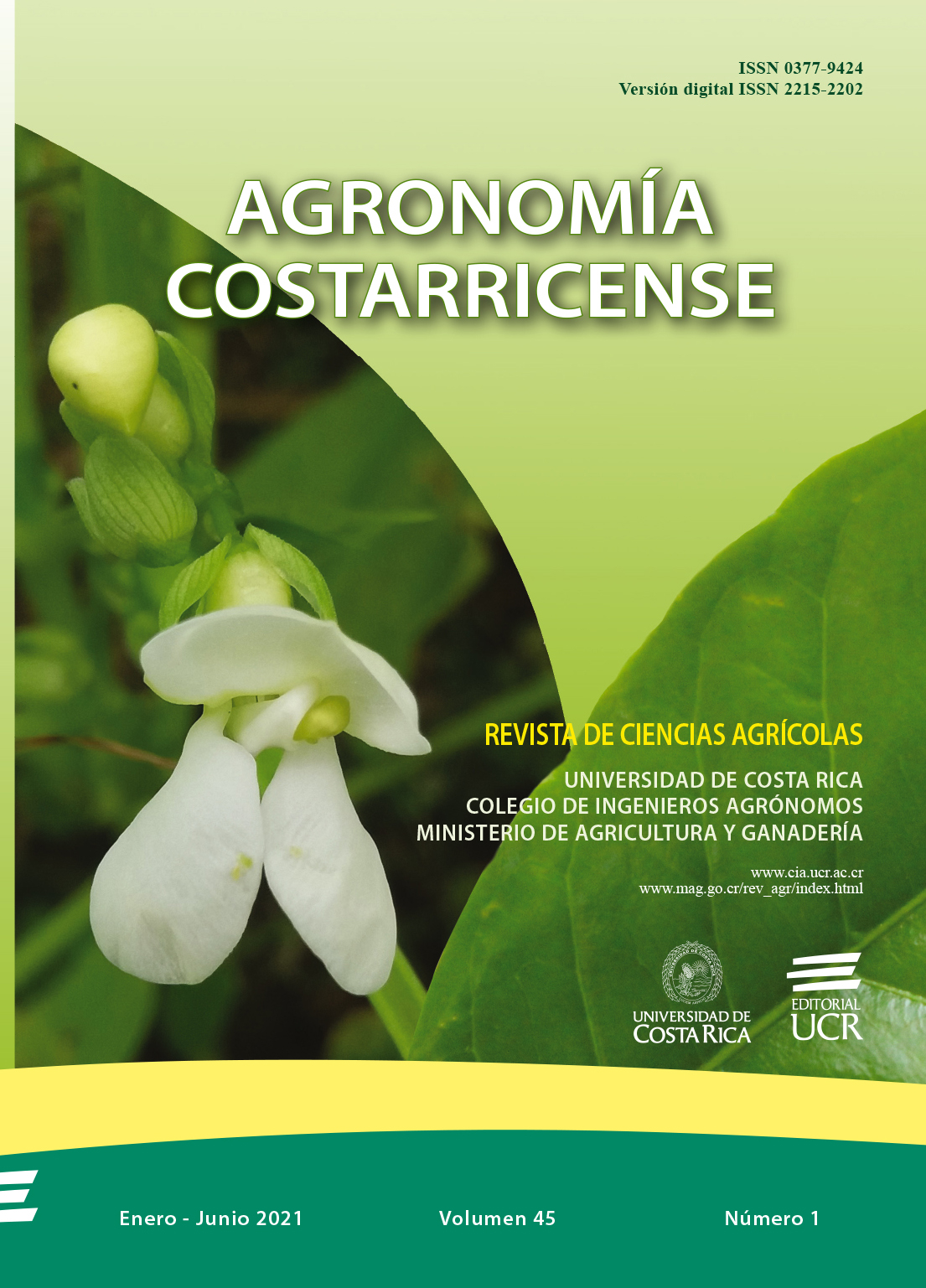Abstract
Introduction. Cover crops provide multiple benefits to the agroecosystem, among them is their capacity to diminish populations of phytoparasitic nematodes due to the nematodes inhability to reproduce in non susceptible plants. The selection of an adecuate living mulch must be based on the absence of nematode reproduction, because moderately susceptible mulches could compromise future crop cycles. Objective. To determine the susceptibility of the legume cover crops Crotalaria juncea L., Crotalaria spectabilis Roth, Vigna radiata (L.) R.Wilczek, Mucuna pruriens L. var. preta, and Mucuna deeringiana (Bort) Merril to the nematodes Meloidogyne incognita (Kofoid & White) Chitwood and M. arenaria (Neal) Chitwood. Materials and methods. Two experiments were carried out simultaneously in a greenhouse at the Estación Experimental Agrícola Fabio Baudrit Moreno, Universidad de Costa Rica, located in Alajuela, from April to September 2015. Legumes were inoculated with 3000 eggs and juveniles (J2) of each nematode species, separately. A completely randomized experimental design was implemented. Results. No significant differences were determined between inoculated and non- inoculated plants for the variables egg mass index (IMH), reproduction factor (FR), fresh weight of roots or dry weight of shoots. M. incognita and M. arenaria populations declined 71% and 19% in V. radiata plants, respectively, and 32% and 29%, respectively in C. spectabilis plants. No egg masses or galls were visible in roots of both Mucuna species and C. spectabilis. Egg masses were visible in roots of V. radiata and C. juncea but were classified as category 1 according to the rating system used (0-5). Conclusion. All legume cover crops evaluated decreased nematode populations of both species inoculated, which suggests that establishment of these legume cover crops could be a viable strategy for management of Meloidogyne populations in agricultural fields.


